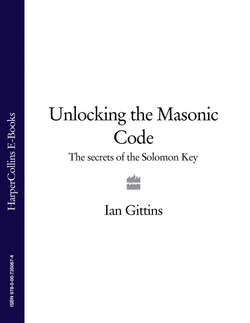Читать книгу Unlocking the Masonic Code: The Secrets of the Solomon Key - Ian Gittins - Страница 13
The Widow’s Son
ОглавлениеMasonic lore holds that Hiram Abiff’s last words before he died were ‘Is there no help for the widow’s son?’. This phrase holds an extraordinary resonance in Freemasonry, and is used by Masons in distress to seek help from fellow members. Dan Brown indicated that The Solomon Key would concern itself with Masonry by hiding the phrase in bold text on the front cover flap of The Da Vinci Code, then alerting readers to its existence via his website.
After Hiram Abiff’s death, King Solomon and Hiram of Tyre oversaw the completion of the project, but fate was not kind to their creation. After it had stood for four centuries on Mount Moriah, the Temple was demolished by King Nebuchadnezzar when he seized Israel for the Babylonians. The Babylonian forces sacked Jerusalem and burned the Temple and the entire city to the ground. The Temple treasures were looted—except for the Ark of the Covenant, which had mysteriously vanished. (The quest for elements of this ‘Holy Grail’, of course, formed the fulcrum of Dan Brown’s The Da Vinci Code.)
After half a century of exile in Babylon, the Jews returned to Israel and rebuilt King Solomon’s Temple under Zerubbabel in 520 BC. This structure fared little better than the original, being torn down by the Romans in AD 70 when the Jews were again banished from Israel.
Today, two of the holiest of Muslim edifices, the al-Aqsa Mosque and the Dome on the Rock, dominate Mount Moriah. The remains of the foundations of King Solomon’s Temple are known as the Wailing Wall, and thousands of Jews make pilgrimages there every year. Yet Solomon’s Temple lives on, bizarrely, in the arcane rituals of a secretive fraternity that was to spring up in Great Britain more than two millennia after Hiram Abiff was purportedly killed—the Freemasons.
